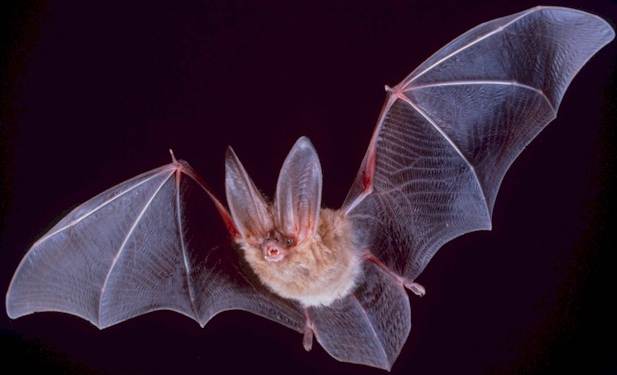 We know wind turbines kill birds. Now a University of Calgary study shows they kill bats in even higher numbers. And not from collisions but from a sudden drop in air pressure known as barotrauma. Ninety percent of the bats examined post mortem showed signs of internal hemorrhaging consistent with barotrauma from the turbine blades. Only about half showed any evidence of direct contact with the blades.
We know wind turbines kill birds. Now a University of Calgary study shows they kill bats in even higher numbers. And not from collisions but from a sudden drop in air pressure known as barotrauma. Ninety percent of the bats examined post mortem showed signs of internal hemorrhaging consistent with barotrauma from the turbine blades. Only about half showed any evidence of direct contact with the blades.
Because they echolocate, bats seldom collide with manmade structures. But an atmospheric-pressure drop at wind-turbine blades is undetectable. And because they’re mammals, they die more than birds from barotrauma. Their balloon-like lungs have two-way airflow and flexible sacs surrounded by capillaries. When external pressures drop, the sacs overexpand and burst the capillaries. Bird lungs are more rigid with a one-way circular airflow and withstand pressure drops better.
Bat fatalities at wind turbines far outnumber bird fatalities and the majority of bats killed are migratory species that roost in trees—including hoary bats, eastern red bats, and silver-haired bats. Little is known about their population sizes. But wind turbines could devastate them. . . Simple solution. Don’t run the turbines at night. And for the sake of birds-of-prey, don’t run them during peak migrations.
Julia Whitty is Mother Jones’ environmental correspondent, lecturer, and 2008 winner of the Kiriyama Prize and the John Burroughs Medal Award.
















